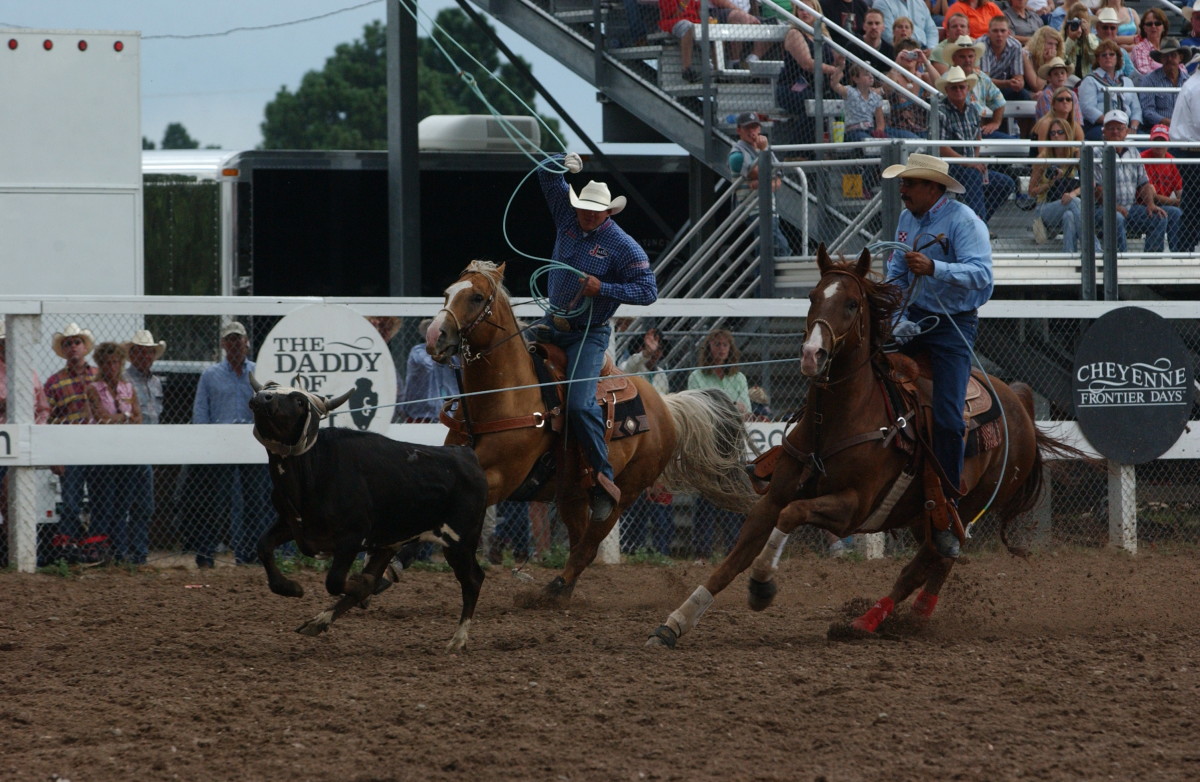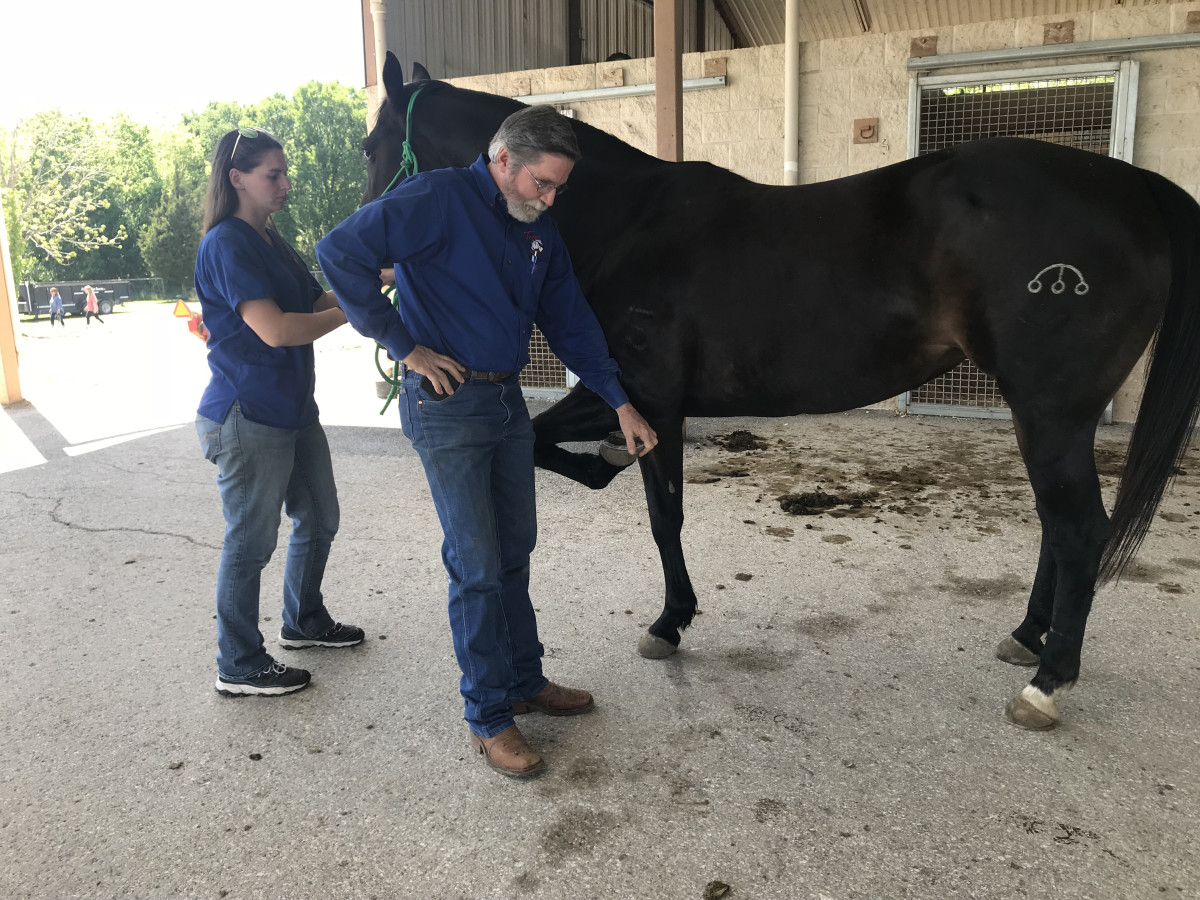ProRodeo Hall of Fame team roper Tee Woolman has bought and sold as many horses in his cowboy career as anyone. That makes him a perfect person to weigh in as an expert on the subject of vet checks—aka pre-purchase exams—and the vast variations available to prospective horse buyers today.
“I always do a vet check when I’m interested in buying a horse I don’t know much about,” said three-time World Champion Team Roper Woolman, who lives in Llano, Texas, with his wife and fellow team roper, Jacque. “I’ll also get one done if I’m wanting to buy a horse that’s maybe been turned out awhile and not used much. A lot of times there’s a reason they quit riding him.”
Very rarely is a horse physically flawless in all areas, but information on those flaws does not always equal a deal-breaking issue.
“A lot of rope horses do need some maintenance,” Woolman said. “Head and heel horses sometimes get a little sore in their hocks from turning, as one example, so may be candidates for hock injections to help with that. It’s like getting your oil changed in your car for some of them. Learning that a horse typically has that done once a year, or even twice, is not particularly alarming to me. If somebody tells me a horse needs it done more than that it’s a red flag that probably ought to be checked out.

“Like people, all horses have bumps and bruises here and there. A little Bute and Banamine is no big deal. People take something for a headache or backache. If I can help a horse a little bit with his aches and pains, I’m all about it.”
Woolman is a renowned horseman, and likes to get young prospects vet checked before he buys them, simply to rule out major problems before investing the time and hard work it takes to make a good one. The degree of diagnostics used to determine a horse’s basic fitness depends largely on the purchase price.
“If I’m buying a $5,000-$10,000 horse for me to rodeo on and I’ve seen him around a lot, I ride him, we flex him, and that’s probably good,” Woolman said. “That’s not a big risk, and I basically know what he is. If I’m buying one for $50,000-$100,000 and I’m getting insurance on him, I want him gone through with a fine-tooth comb, because of the greater investment and risk. As a buyer in that situation, it’s worth paying more money for a more detailed vet check, because I need to know what I’m getting into.”
Woolman’s veterinarian of choice is Dr. Cliff Honnas of Texas Equine Hospital in Bryan, Texas. Like most horse doctors, Dr. Honnas offers a range of pre-purchase-exam services to suit the circumstances.
“I don’t ‘pass or fail’ horses,” Honnas said. “And the depth of the exam is typically directly related to the price of the horse. A basic pre-purchase exam will include listening to a horse’s heart, looking at his eyes, trotting him, and a flex test.
“At the other end of the spectrum, there may be X-Rays of the feet, hocks, stifles, knees, and possibly even the back. And I’ll palpate everything, feeling for everything from extra fluid in joints to boney remodeling in a hock to checking for enlarged suspensory branches. I’ll palpate the flexor tendons, and the origin of the suspensory ligaments where they attach to the top of the cannon bone right below the back of the knee and hock. I may also scope them to check their throat.”
Honnas, who’s almost 60 and has been practicing for 35 years, says most pre-purchase exams at his clinic cost between $300-$1,200. But when the occasional client asks for the full boat and beyond, $2,500 is not out of the question. He’s careful to get as much medical history on a horse as possible, and if there’s a specific problem in question will dig deeper in that area for an explanation, so a buyer can be educated and make an informed decision.
“I try to be exceedingly honest,” Honnas said. “At the end of the day, people are wanting my expert opinion as they try to decide whether or not they can live with and manage a horse’s issues or not.”
Vets often find themselves in a crossfire situation between buyers and sellers based on basic human dynamics.
“The buyer pays for the exam, so they have to give permission for me to talk to the seller,” Honnas said. “That can be awkward for the veterinarian, because both people involved in the transaction are hopeful for good news. Again, all I can do is be completely honest about my findings. From there, people have to use their own judgment. Buyers also factor in their needs and expectations into the equation. Let’s face it, a horse may not be a good candidate to work for Tee Woolman at the world-class level, but may fill another roper’s needs just fine.”
It’s easy to understand why buyers seek an expert opinion they trust. The facts come first.
“X-Rays don’t lie,” Woolman said. “If there’s a chip in a horse’s knee, there’s a chip in his knee. That’s happened to me with a horse that never took a lame step in his life, and it cost me a small fortune. But there it was in black and white. If a horse has big knees or big ankles, I’m pretty much out when I’m buying, for cosmetic purposes and resale—unless it’s a rodeo horse I can take and win on.

“And that’s happened, too. I’ve knowingly bought a horse that had ringbone. There was no use to vet check him, because I knew he wouldn’t pass. But I won a fortune on him (a sorrel horse they called Brandy). And after I got a good year out of him, I sold him to J.P. Wickett, and he made the (National) Finals (Rodeo) on him (in 1998, heading for Trevor Brazile). Sometimes the use you can get out of a horse like that is just a gamble.”
Regardless of whether or not you get a horse vet checked, or to what degree, there’s no such thing as a horse warranty.
“The best vet in the world can’t guarantee you there will never be a problem,” Woolman said. “All he can do is give you his best opinion on how the horse looks today. A horse is not a car, and there are factors beyond our control that come into play, including ground conditions and even a little luck. Rope horses work hard. They’re athletes, and they get a lot of mileage. When you play hard, sometimes things just happen.”
“It really is kind of like buying a car,” Honnas agreed. “Everybody expects that car to never break down. But at some point, for some reason, most cars do break down. With a living thing, you really just never know. And one size does not fit all when it comes to rope horses. Making an informed decision on which horses will work in his or her program, then taking the best possible care of them, is basically every horse owner’s best shot.”










